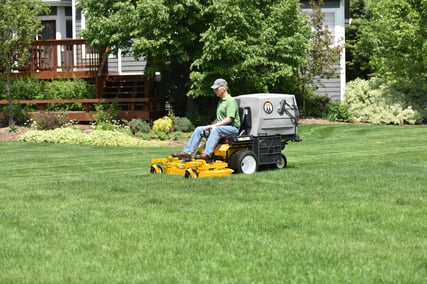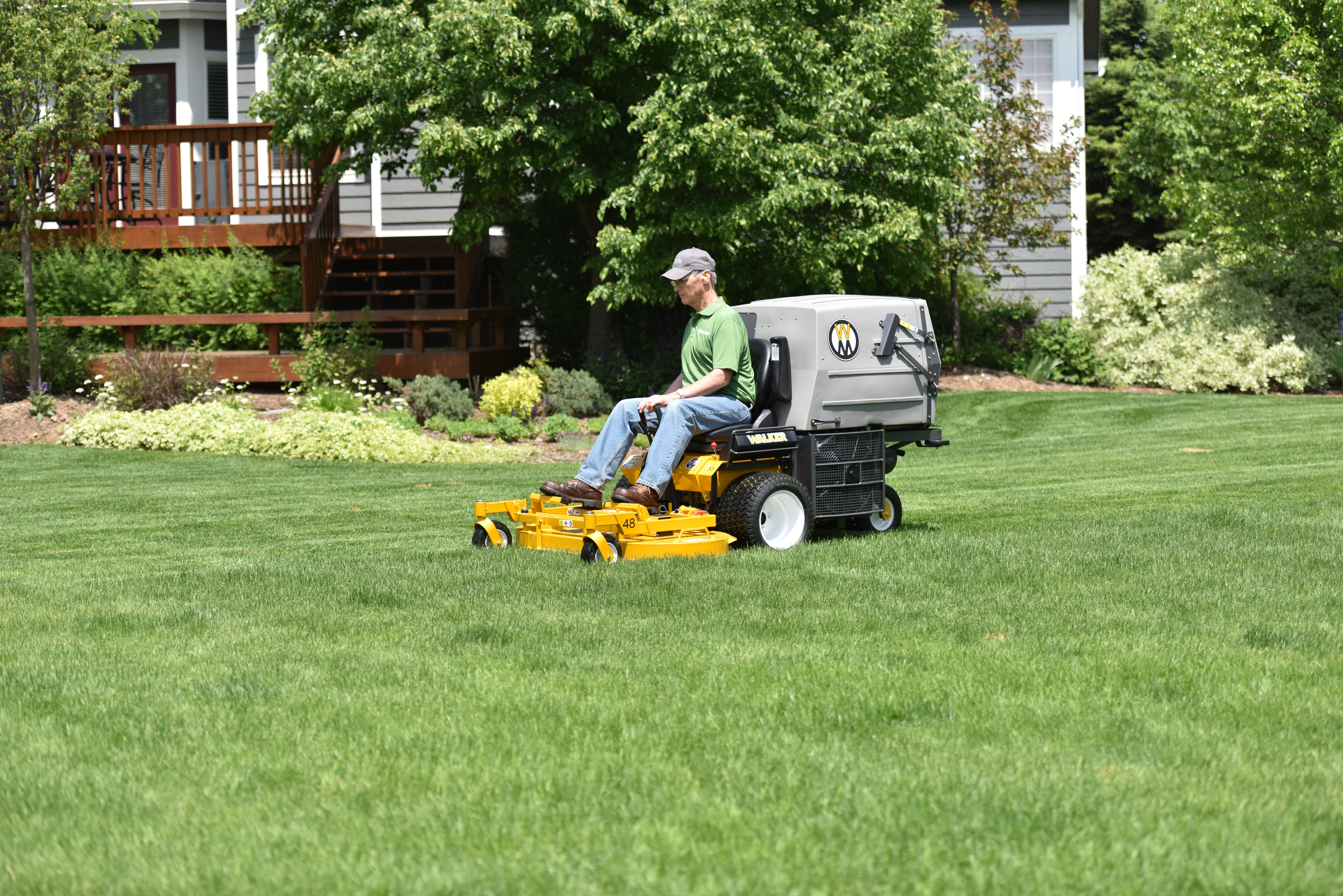Back in 2008, Walker Talk volume 33 ran a story on Ralph Anderson, the owner of Anderson Lawn Care in Wyanet, Illinois. The title of the story was “Age is No Barrier for This Mowing Contractor”, and it still isn’t. Anderson is 83 years old and going strong.
The story focused on how Anderson, who was 76 years old at the time, grew his business, but it also highlighted the fact that several of his employees were retirees. In the article, he remarked, “I also rely heavily on retired farmers and area shift workers. Both have great work ethic. The farmers especially are very familiar with equipment.”
 He recently told the Walker Talk editor that the retired farmers have been replaced by a retired truck driver, a city retiree, and a Vietnam vet who has retired from working for Caterpillar.
He recently told the Walker Talk editor that the retired farmers have been replaced by a retired truck driver, a city retiree, and a Vietnam vet who has retired from working for Caterpillar.
Anderson also has younger workers who can do the tough manual labor, something his older workers cannot do. But ride a Walker Mower? Why not? Or provide routine maintenance, replace belts and sharpen blades? Sure, if they have the expertise.
Alternative solutions
If you’re not looking for solutions to a labor issue, then you’re likely not in the lawn maintenance business. Labor is not only your biggest business expense, it’s also something you cannot do without. The big challenge is there simply are not enough people who want to work mowing and maintaining landscapes, in part, because it can be labor-intensive and in part, because construction and similar jobs pay more.
That scenario changed somewhat during the Great Recession, but an uptick in building and other construction has since added to a labor shortage. The industry has tried to supplement with guest workers, but the H-2B program has become progressively difficult and expensive to use, not to mention the fact the yearly visa quotas (66,000) hardly put a dent in the service industry’s labor needs.
Bob Vickery of The Planter’s Touch in Easley, South Carolina, (Walker Talk 27) had a retired neighbor help him when he first began his business. “I found him to be an excellent worker who always had a great attitude,” said Vickery, who has also used many high school and home-schooled students whose schedule usually allows them to work several days a week.
“Working with the students requires more patience than I have some days. But they can be good workers and hiring them has allowed me to mentor many young people over the years,” he added. His former employees now number a state representative, a medical doctor, a Ph.D. in engineering, and two who own their own landscape companies.
Vickery became acquainted with some of these students through his church. Others were recruited via a home-school network. He has also been involved with a local rescue mission and has considered employing some graduates of its rehabilitation program.
“The downside of employing students is they usually leave after a few years and you have to train someone else again. But this cycle is worth our time and effort since we turn down maintenance jobs regularly because we don’t have enough help,” said Vickery.
Other lawn maintenance contractors have used temporary employment agencies with varying degrees of success; others still have experimented with job sharing outside the industry.
What About Using Retirees?
According to AARP, nearly two-thirds of older workers today see themselves working in retirement, either out of choice or necessity. The New York Times recently reported (June 15, 2015) that in the late 1990s, only one in five Americans in their late-60s needed a job. Now, that number has almost reached one in three.
The labor supply is there and as AARP CEO Ann Jenkins (writing in the June 2015 AARP Bulletin) pointed out, so are many of the sought-after traits employees are looking for. Among them, are “experience and engagement, maturity and professionalism, a strong work ethic, loyalty, reliability, knowledge and understanding, and the ability to serve as mentors.”
“With these traits,” she added, “they are in a prime position to help close the labor shortage U.S. employers face.” The question is whether or not lawn maintenance contractors truly count themselves to be among these employers. After all, the days are long and sometimes very hot, and the work can be very tiring.
The answer is “yes”, depending on the job and the work environment. Anderson’s retirees, for example, operate Walker Mowers and he allows them a degree of flexibility that other employees may not have, in terms of days and hours worked. “I think many retirees relish the feeling of being productive and recognized for what they do,” he noted. “Having a job gives them a feeling of worthiness.”
Lawn maintenance is not all manual labor and one needs not to be 20 years old and in great condition to be productive. In addition to less physically demanding jobs such as operating a mower or driving a truck, companies, depending on their size, may need account managers, salespeople, administrative help, and so forth.
In fact, in a recent study conducted by the National Association of Landscape Professionals (NALP), 40 percent of landscape companies surveyed indicated
they plan to hire managers next year. The study also found that nationwide, there are 60,000 management jobs available in the industry. Finding manual laborers, then, is not the industry’s only challenge.
Recruiting Retirees
How does one find and recruit retirees? Certainly, church groups, Lions Clubs, and veterans associations are viable resources. Posting jobs on any of several search engines and your company website can be effective, too, especially if positions are written to attract retirement-age individuals, e.g., flexible hours, flexible schedules, and so forth.
AARP offers several resources, as well, that reach a more targeted audience. They include:
- Job Postings. The AARP website features a job search engine at jobs.aarp.org powered by Indeed.
- Employer Resource Center. Tools and resources for employers and employees at aarp.org/work/employers.
- The AARP Workforce Assessment Tool. This free, confidential tool can help you assess your current and future workforce needs. Complete the Assessment Tool survey and receive a report, which provides recommendations on how to develop the policies and practices that appeal to older workers, by visiting aarpworkforceassessment.org
Recruiting and hiring retired workers will not by itself solve the labor challenges this and other service industries face. But given the right position, the right environment and the right incentives, these workers can step in for younger workers who may lack the knowledge, experience and even the work ethic to succeed.





 Site Search
Site Search



